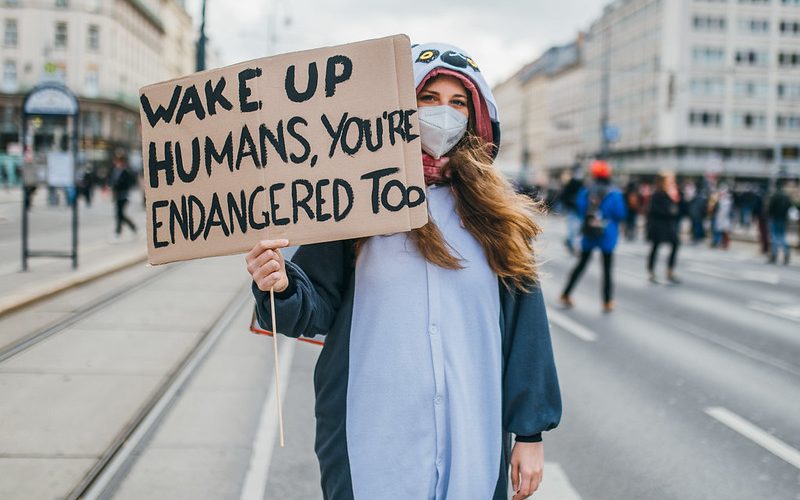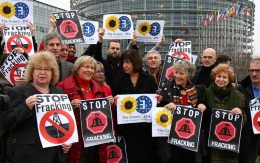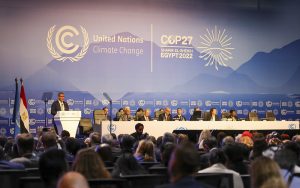Fashion is an art form; a form of expression, representation and autonomy, transcending across time and culture. While we are able to look into fashion trends from centuries ago varying between decades, today’s trends are more short-lived than ever before in history.
In the past, fabricating clothes was a laborious task. It was made completely by hand. The more intricate and luxurious the design, the more expensive the attire. Thus, fashion was for many centuries exclusive and inaccessible. However, matters have changed over half a decade. Today, everyone has the opportunity to be fashionable and to relish new fashion trends. All thanks to one source: Fast Fashion.
Fast Fashion is defined as inexpensive clothing produced rapidly by retailers to meet latest market trends. As the name suggests, clothing designs from catwalks and catalogues are produced within days to hit the stores and meet the demands of customers who seek to join the latest fashion trends. In essence, people across all economic statuses have access to similar fashion ideas.
However, fashion trends today expire sooner than milk. With the prominence of influencers on social media platforms, several micro-fashion trends are introduced each week. The microtrends perpetuated by social media influencers spawn the expectation to keep up-to-date and succumb to these trends, encouraging younger impressionable people to purchase fashionable clothes at an affordable prices from fast fashion companies. These trends are short-lived, and consequently, so are the clothes bought. The materials used to create clothing articles are of low quality, which is why clothes today do not last long. This also benefits the company as it pushes people to purchase new clothes every few months. More clothes are produced and purchased than ever before and eventually disposed of even quicker.
Fast fashion has become a bane to the fashion industry, society, and the environment. While fast fashion opens doors for ordinary individuals to partake in and enjoy fashion, it comes at the expense of exploited garment workers, the plagiarism of artistic work of fashion designers, and most inimically, inhibits any climate protection activism and progress.
Fashion trends principally seek inspiration from high fashion designers. The latest Versace boots or Jacquemus bags are wondrous pieces of fashion, but unattainable to many. Fast fashion bridges that gap and provides a replicate of the design to sell luxury at cheaper prices for those who cannot afford it, which is the majority of the population. The fast fashion industry is known for imitating high fashion and independent small fashion brands. They avoid counterfeit issues by making minuscule modifications to the original designs. Luxury counterfeits or plagiarism generates losses worth more than $50 billion every year to the fashion industry.
Fast fashion is also notorious for employing another unethical behaviour in the production process: the usage of sweatshops. These are garment factories primarily operating in developing countries where workers are exploited at menial wages, with average earnings of $50 per month, while working in poor, unhealthy and oppressive conditions, often being forced to work for more than 72 hours uninterrupted. Sweatshop labourers primarily constitute of women and children living in poverty who are working in crowded and unsafe places. The workers are forced to choose between earning wages or remaining unemployed. Essentially, they are trapped in modern slavery to survive. The heinous conditions of sweatshops were spotlighted following the Rana Plaza Factory collapse in Bangladesh where an 8-story building collapsed. Although there were previous signs of imminent structural failure, the workers of the garment factory run in the building were forced to return to work. This resulted in over 1,100 deaths and over 2,500 injuries.
The Indo-Pacific region is home to the highest number of sweatshops in the world: Bangladesh, Thailand, India, Indonesia, Sri Lanka, and the Philippines host a bulk of them. The prime factor behind affordable clothing is its inexpensive production process, and thus being able to make clothes at a price cheaper than they are selling. Hence, sweatshops are the norm for fast fashion companies since they save money by paying unliveable wages and receive twice the effort from the labourers.
Fast fashion also contributes to environmental degradation. The industry is responsible for generating more pollution than the aviation and maritime shipping industry combined, contributing to 10% of the global carbon emissions yearly, and is expected to increase by 50%. The industry is also the second-biggest consumer of water. It takes 2,700 litres of water to produce a T-shirt, 10,000 litres for a pair of Jeans, and 600 litres of water for a pair of cotton socks. Plant-based materials such as cotton used by fashion industries take up 2.5% of the world’s farmland, and synthetic materials like polyester require around 342 million barrels of oil every year for its manufacturing and nylon is made of plastic, while dying clothes need 43 million tonnes of chemicals. The residue of the chemicals is often disposed of irresponsibly, leading to further pollution. All of these statistics only represent the production process. Post-production, 1.92 million tons of textile waste is produced yearly, most going into landfill sites. By 2030, the estimated sum is 134 million tons per year. The disposed or donated clothes are also incinerated in landfill sites, contributing to more air pollution and releasing toxic chemicals into the air as the clothing materials are manufactured with plastic and other harmful toxins. All these factors colossally exacerbate the climate crisis but are rarely addressed.
Minimising ones impact
As stated by renowned fashion designer Vivienne Westwood, “Buy less, choose well, make it last.”. Learn to shop responsibly and sustainably. Instead of altering wardrobes to accelerate every minuscule trend cycle, purchase versatile clothing styles which can fit every trend, or more efficiently, avoid feeding into new fashion trends. Studies have shown that reducing purchases of fast fashion clothes by a maximum of eight articles can reduce the fashion industry’s emissions by 37%. If you are purchasing outfits you will never wear again, rent them instead. In the UK alone, replacing 10% of new clothing with rented ones can save 160,000 tonnes of carbon emissions.
Thrifting is another alternative for trying new clothing styles without promoting mass production of short-lived clothing. Although, the rising popularity of thrifting has gentrified the process, with many consumers merely replacing fast fashion companies with thrift stores and continuing bulk buying practices. This forces thrift stores to display more clothes and increase prices, making them inaccessible to low-income households, which community thrifting was designed for. Fast fashion must also be boycotted, or at the very least, reduce the purchases made. Consumers have purchasing power, and without the demand for more clothing, it is improbable for companies to continue their rapid production process and be absolved of unethical and unsustainable transgressions. Governments must be more involved in combating unethical choices made by fast fashion companies, who must be held accountable for the destruction they are amassing. They must be coerced into being more responsible and minimising the damages created. These include acts of reckless waste disposal, labour exploitation, environmental degradation, and plagiarism.
Submit here
Sources Dondaldson, T. (2021) ‘Asia-Pacific Supports the Fashion Industry, but Does the Fashion Industry Support Asia-Pacific’, Women’s Wear Daily [online] available from <https://wwd.com/fashion-news/fashion-features/fashion-industry-taps-75-percent-garment-workers-from-asia-pacific-aapi-heritage-month-1234828301/> Igni, M. (2022) ’10 Concerning Fast Fashion Waste Statistics’, Earth.org [online] available from <https://earth.org/statistics-about-fast-fashion-waste/> Noble, B. (2020) ‘Rana Plaza – The Day the Fashion World Changed’, Good on You [online] available from <https://goodonyou.eco/rana-plaza/> Rauturier, S. (2022) ‘What is Fast Fashion and Why Is It So Bad?’, Good on You [online] available from <https://goodonyou.eco/what-is-fast-fashion/> Stallard, E. (2022) ‘Fast Fashion: How clothes are linked to climate change’, BBC [online] available from <https://www.bbc.com/news/science-environment-60382624> Wiego (2021) Garment Workers [online] available from <https://www.wiego.org/garment-workers> Wight, M. (2021) ‘What impact do counterfeits have on the fashion industry’, Red Points [online] available from <https://www.redpoints.com/blog/fashion-counterfeit-impact/>








Be First to Comment